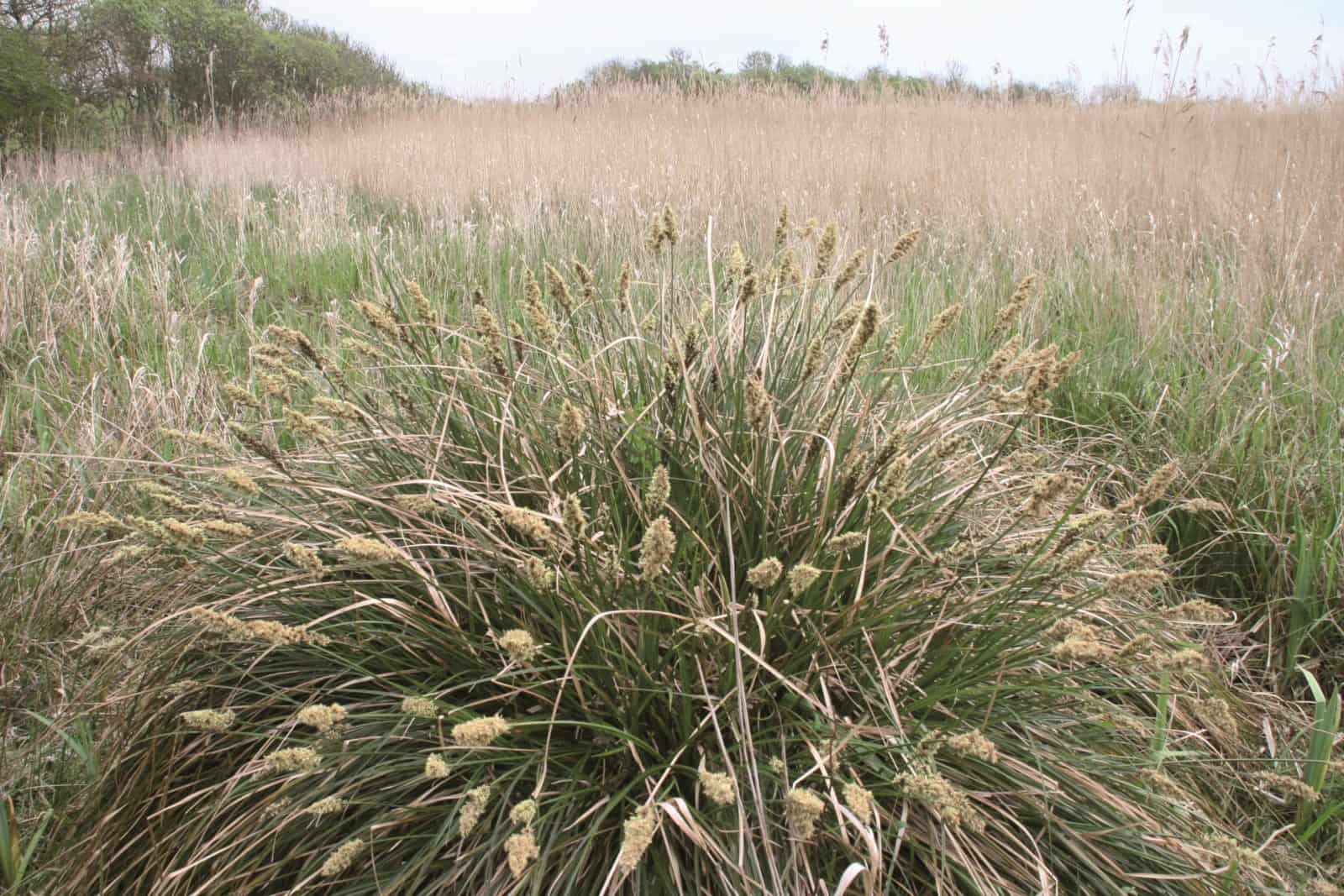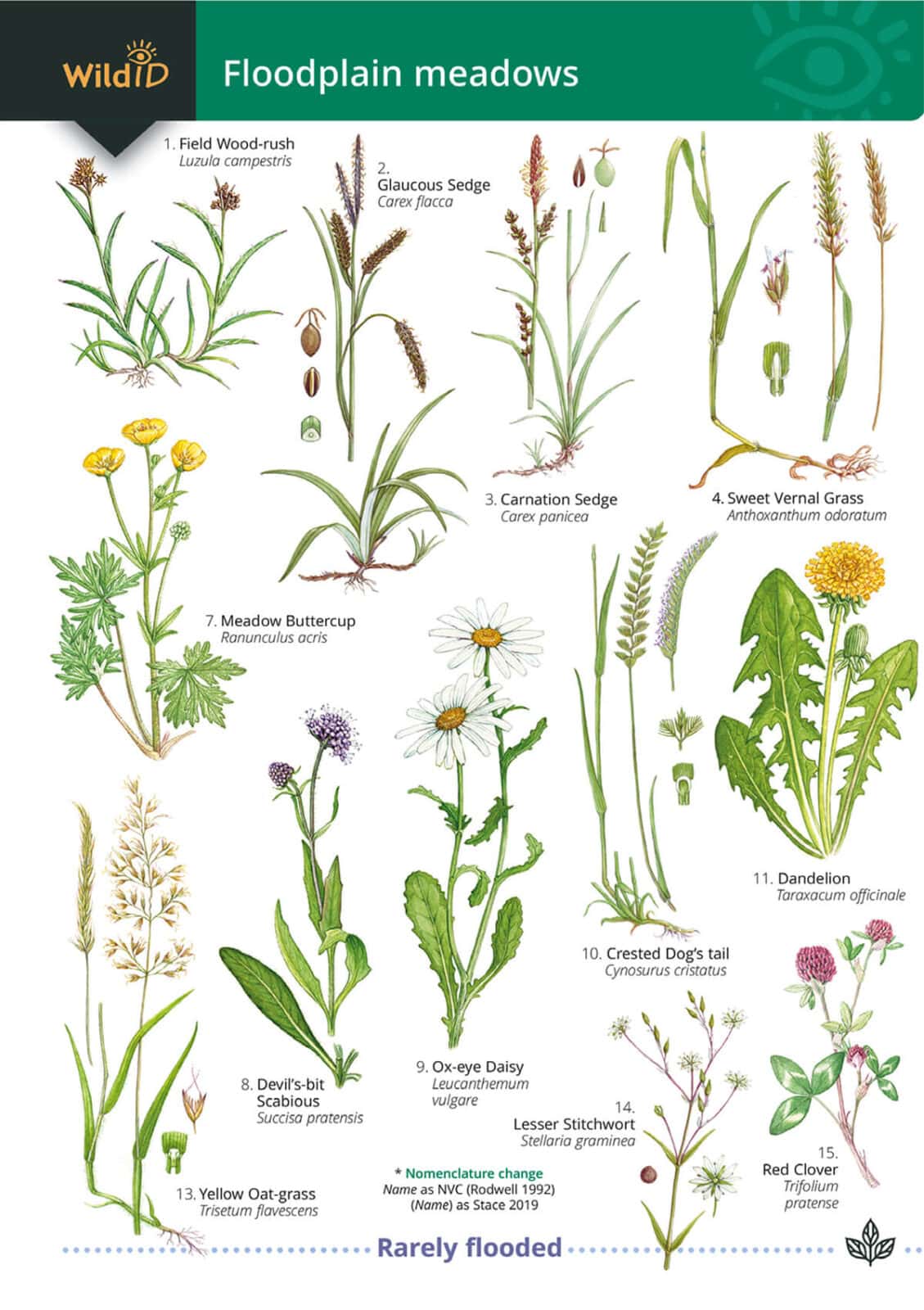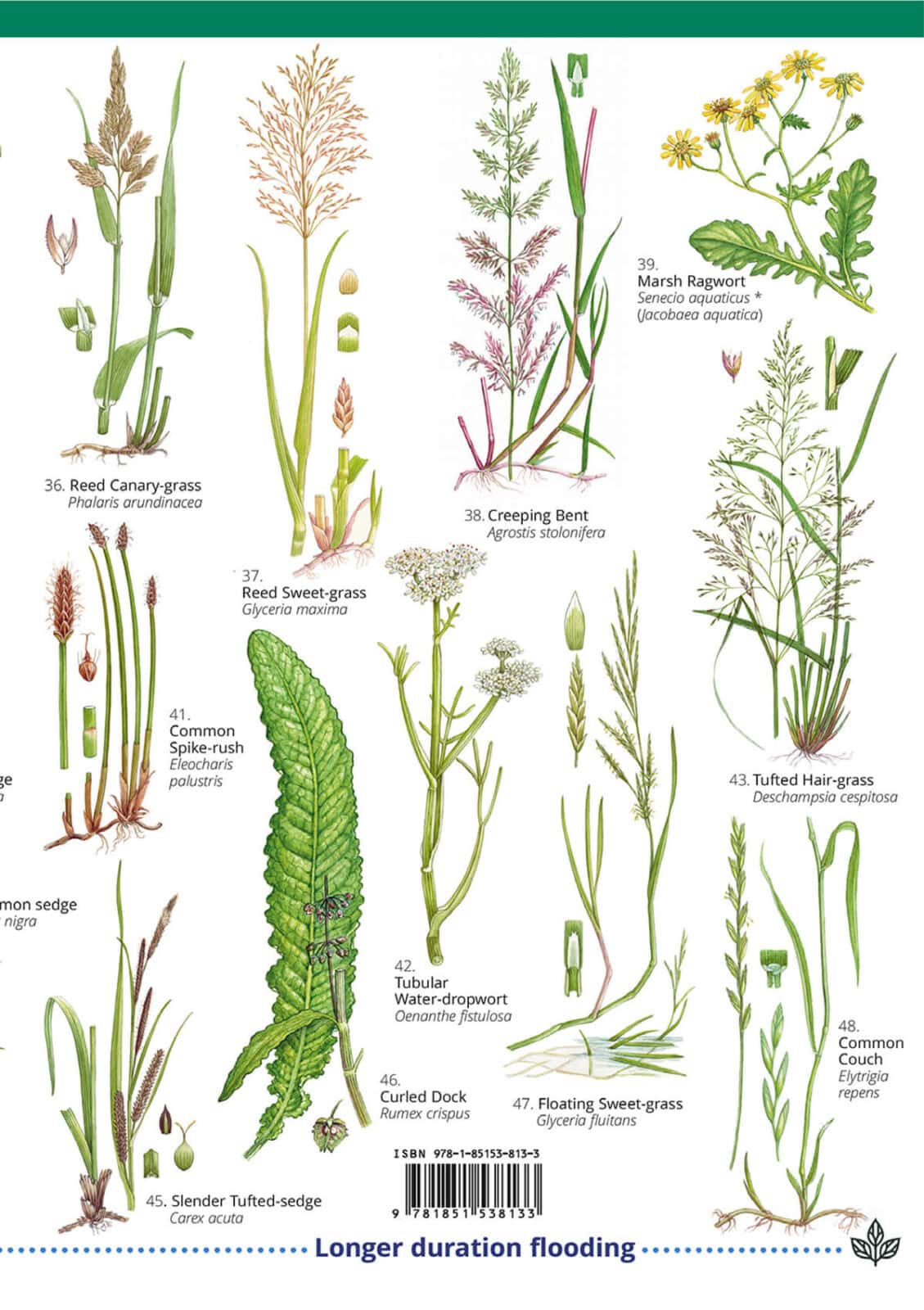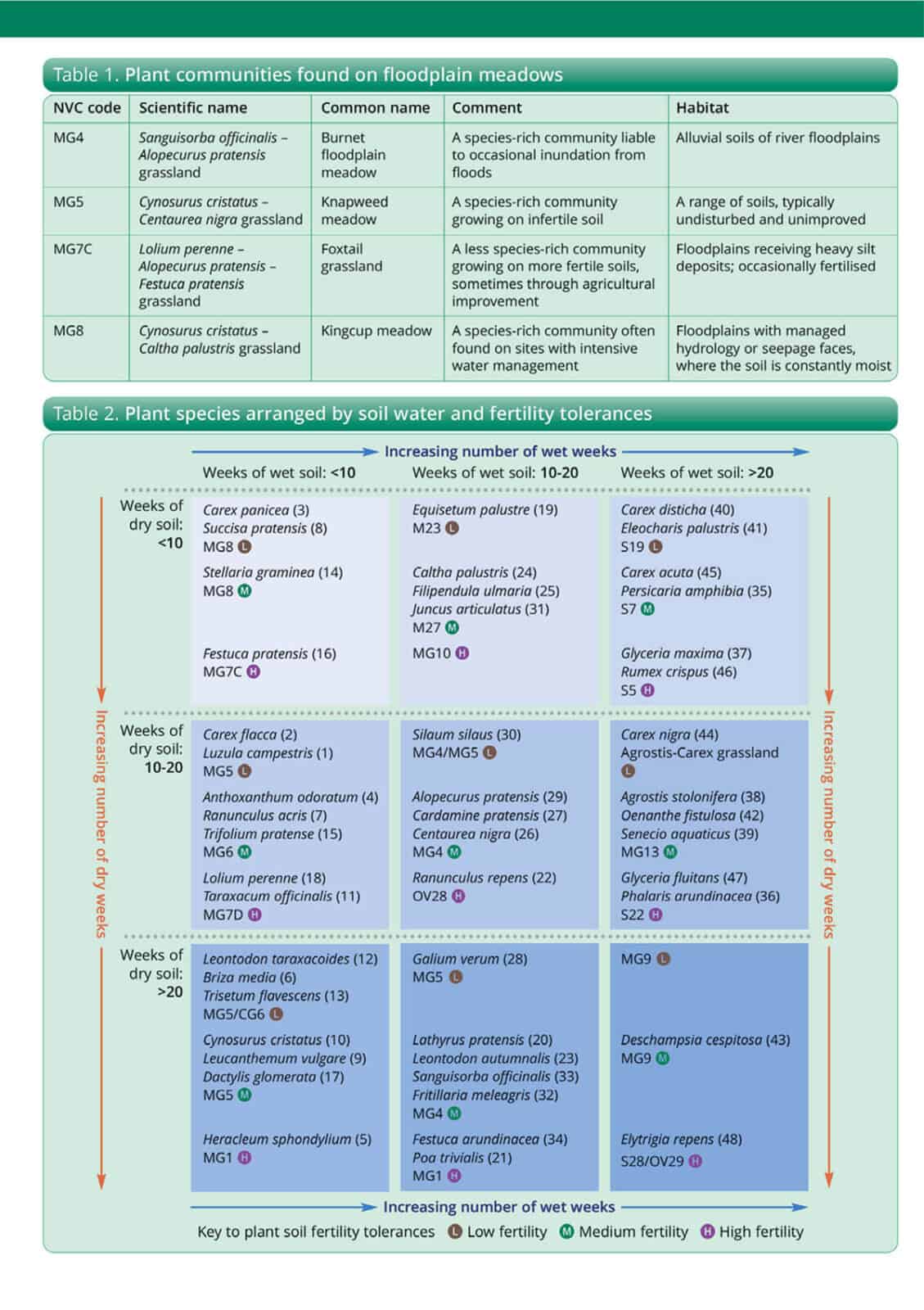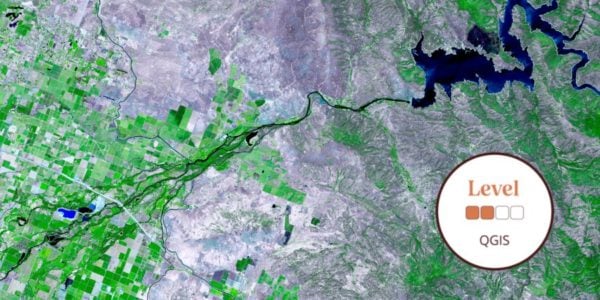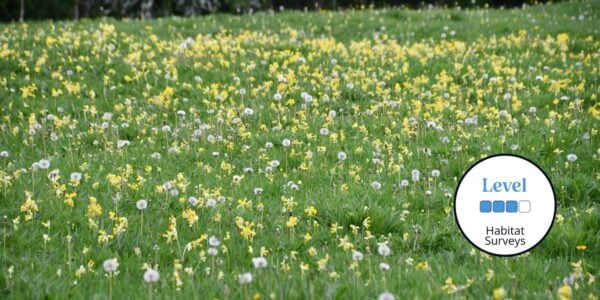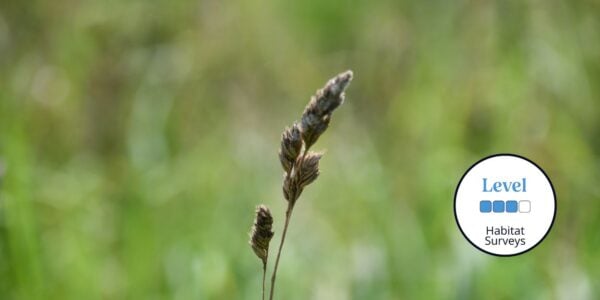Floodplain meadows guide
The FSC Floodplain meadows guide features 48 indicator species of flowering plants from this internationally rare habitat.
Beautiful colour paintings show the key features of each plant. But this chart is not solely an identification guide. The species and communities give clues to a site’s history, management, soil fertility and water regime.
Species-rich floodplain meadows occupy less than 1500 hectares in the UK. They are special because they have a high species diversity. Indeed some can support up to 40 plant species per square metre, including many rarities. Floodplain meadows have evolved over hundreds of years as a way to sustain livestock over winter. An annual cut for hay in midsummer with grazing afterwards prevents taller and coarser plants from becoming dominant. Centuries of management has created the diverse flower-rich sward we see today.
Some plants indicate that flooding is rare, such as Devil’s-bit Scabious, Field Wood-rush and Crested Dog’s-tail. Others suggest short duration flooding, such as Meadowsweet, Great Burnet and Pepper Saxifrage. And finally plants such as Common Spike-rush, Reed Canary-grass and Floating Sweet-grass point to longer duration flooding. Accompanying tables outline soil water (how many ‘wet weeks’ in the year) and fertility tolerances.
Plant species with similar soil moisture and fertility requirements, plus similar responses to any management, tend to grow together. These form the basis of the National Vegetation Classication (NVC). This guide outlines relevant NVC communities, ranging from MG4 on occasionally inundated soils to MG8 on sites with constantly moist soils.
The Floodplain meadows guide was produced in association with the Floodplain Meadows Partnership.

